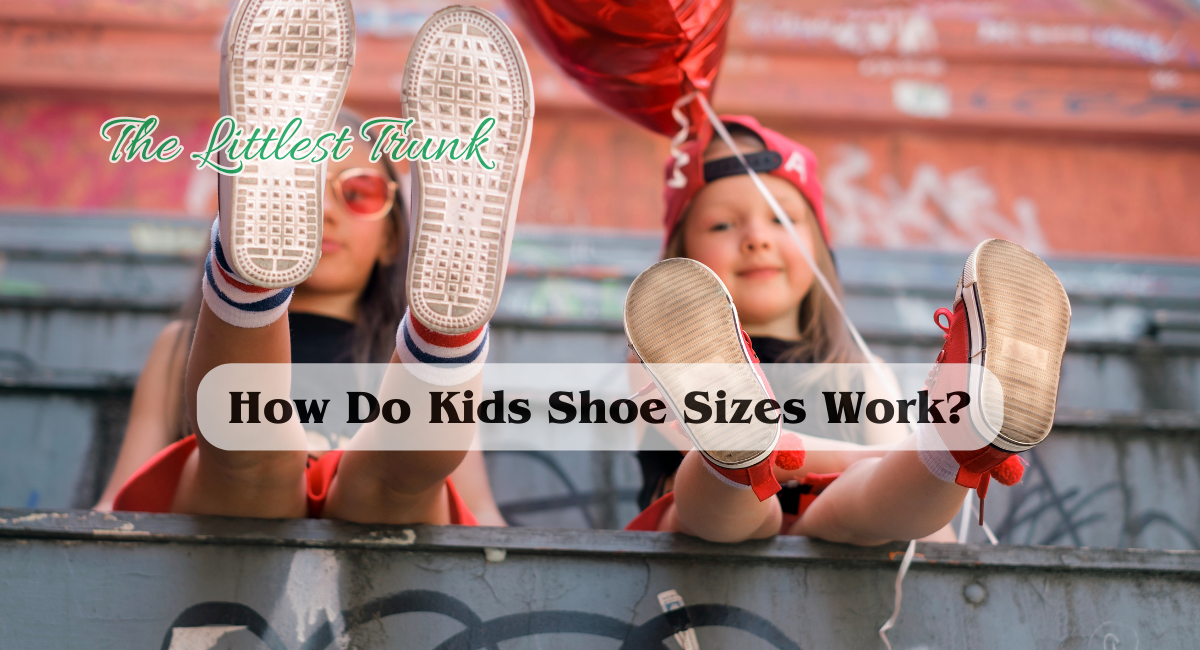Kids grow incredibly, making it challenging to locate the correct shoe size. As a parent or guardian, it’s critical to understand how children’s shoe sizes work to provide them with comfortable and supportive footwear. In this post, we will investigate the complexities of children’s shoe sizes, review the measuring method, offer shoe-buying advice, and answer frequently asked concerns.
Understanding Kids Shoe Sizes
Before diving into the specifics of measuring and purchasing children’s shoes, it’s critical to understand how shoe sizes are established. Kids’ shoe sizes are normally classified by age range, beginning with infants and progressing through toddlers and children. These age groups are further broken into several sizes ranges to accommodate children’s foot growth and development.
Measuring Kids’ Feet
It is critical to precisely measure your child’s feet in order to get the correct shoe size. First, determine their foot length with a measuring tape or ruler and compare it to a size chart. Make sure to measure both feet because they may differ slightly in size. Measuring your feet in the evening when they are slightly swollen from the day’s activity is best.
Infant Shoe Sizes
Infants’ feet are sensitive, requiring shoes that give adequate support while allowing them to move freely. Infant shoe sizes are typically determined by the child’s age and are denoted by an “M” to indicate months. However, remember that not all infants grow at the same rate, so using a period as the primary criterion is not always appropriate.
Toddler Shoe Sizes
As children grow from infants to toddlers, their feet experience rapid growth and development. As a result, toddler shoe sizes are typically designated with a “T” to denote toddler sizes. These shoes are intended to provide additional stability and flexibility to toddlers as they explore their surroundings.
Children’s Shoe Sizes
When toddlers outgrow toddler sizes, they enter the children’s shoe sizes domain. These sizes are usually labeled with a number followed by a “C” to indicate that they are for children. Children’s shoes are available in various styles and designs, allowing them to express their individuality while providing comfort and support for their growing feet.
International Shoe Size Conversion
When purchasing shoes from another country, it is critical to understand shoe size conversions to ensure a suitable fit. Because different nations use different sizing systems, it is necessary to consult conversion charts or seek guidance from expert shoe dealers to determine the corresponding size.
Buying Tips
Consider the following suggestions while purchasing children’s shoes:
- Before buying new shoes, they should always measure their feet.
- Allow some extra room for growth, but avoid wearing shoes that are too big.
- Select shoes made of breathable materials that provide adequate support.
- To support natural mobility, consider the shoe’s flexibility and sole traction.
- Finally, choose adjustable closures such as Velcro or laces for a more tailored fit.
Choosing the Right Fit
Finding the appropriate fit is critical for the health and comfort of children’s feet. When selecting shoes for your child, keep the following considerations in mind:
- Check for enough toe space and a secure fit around the heel.
- Shoes should be neither too tight nor too loose.
- Allow roughly a thumb’s width between the longest toe and the front of the shoe.
- Consider the child’s foot breadth, arch support, and any unique foot condition considerations.
Shoe Size Growth
Because children’s feet grow quickly, keeping track of their shoe sizes regularly is critical. Children’s feet typically develop one size every three to four months. Therefore, maintain a record of their shoe sizes and change them as needed to ensure a proper fit that supports their growing feet.
Taking Care of Kids’ Shoes
Follow these care instructions to extend the life and quality of your child’s shoes:
- Clean the shoes regularly with approved cleaning solutions for the material.
- After being exposed to dampness, allow the shoes to dry naturally.
- Rotate shoes to equally disperse wear and prevent excessive wear on a single pair.
- Store shoes in a well-ventilated environment to prevent odor and keep them fresh.
- Examine shoes for signs of wear and tear and replace them as needed.
Common Shoe Size FAQs
Q: How often should I measure my child’s feet?
A: Because your child’s feet grow quickly throughout the early years, it’s best to measure them every three to four months.
Q: Can I rely on shoe size conversion charts when buying shoes online?
A: While shoe size conversion charts can provide broad guidance, it’s best to double-check the retailer’s particular dimensions and read customer reviews for insights on fit and sizing accuracy.
Q: Are there any signs that indicate my child’s shoes are too small?
A: Redness or blisters, discomfort or pain, toes pressing against the front of the shoe, and difficulty putting on or taking off the shoes are all symptoms.
Q: How can I measure my child’s feet accurately at home?
A: Measure the length of your child’s foot from the heel to the longest toe with a measuring tape or ruler. Check the measurement against a size chart or a shoe-fitting guide.
Q: What should I do if my child’s feet are different sizes?
A: If your child’s feet are significantly different, choose shoes that comfortably fit the larger foot. Shoe inserts or custom-made shoes may be required in some circumstances.
Conclusion
Parents and guardians must understand children’s shoe sizes to equip them with comfortable and supportive footwear. You may ensure your child’s shoes fit correctly by carefully measuring their feet, considering growth variables, and following buying suggestions. Monitor their shoe sizes regularly, take care of their shoes, and answer typical queries to ensure healthy foot growth. Remember to seek professional advice when making decisions concerning your child’s footwear.
Read more: Things to do with the Kids to Celebrate Earth Day!
